Abstract
The relation between dust exposure, retained lung dust, and pneumoconiosis have been examined in 430 dead coalminers who had participated in a large scale epidemiological survey of respiratory health. The men were divided into three groups depending on the presence of particular lesions in their lungs. Lungs containing no fibrotic lesions in excess of 1 mm were included in the "M" group, those with fibrotic lesions of between 1 mm and 9 mm in diameter were included in the "F" group, and those with any lesion 10 mm or more were categorised as having progressive massive fibrosis (PMF). The men were further divided into four groups according to the rank of coal mined at the colliery of employment. The mean weight of lung dust increased over the pathological range (M----F----PMF) regardless of the rank of coal mined. The men with PMF had not received unusually high exposures to dust in life but were found to have accumulated more dust in their lungs per unit of dust exposure than men without PMF, providing further evidence for differences in the patterns of deposition or clearance, or both, of dust in these men compared with those who do not develop PMF. For men who had mined the higher rank coals there was no difference in the composition of the lung dust between the pathological groups. Lungs from men mining low rank coal, however, showed a striking increase in the proportion of ash over the pathological groups (M, F, and PMF). In men who had mined low rank coal the proportion of ash in the airborne dust to which they had been exposed and in the dust retained in their lungs was, as expected, greater than in men who had worked with higher rank coals. For the same men, and particularly associated with the presence of some dust related fibrosis, the proportion of ash in retained dust was higher than that in the dust to which the men were exposed suggesting the occurrence of selective deposition or retention of the mineral components of dust in this group.
Full text
PDF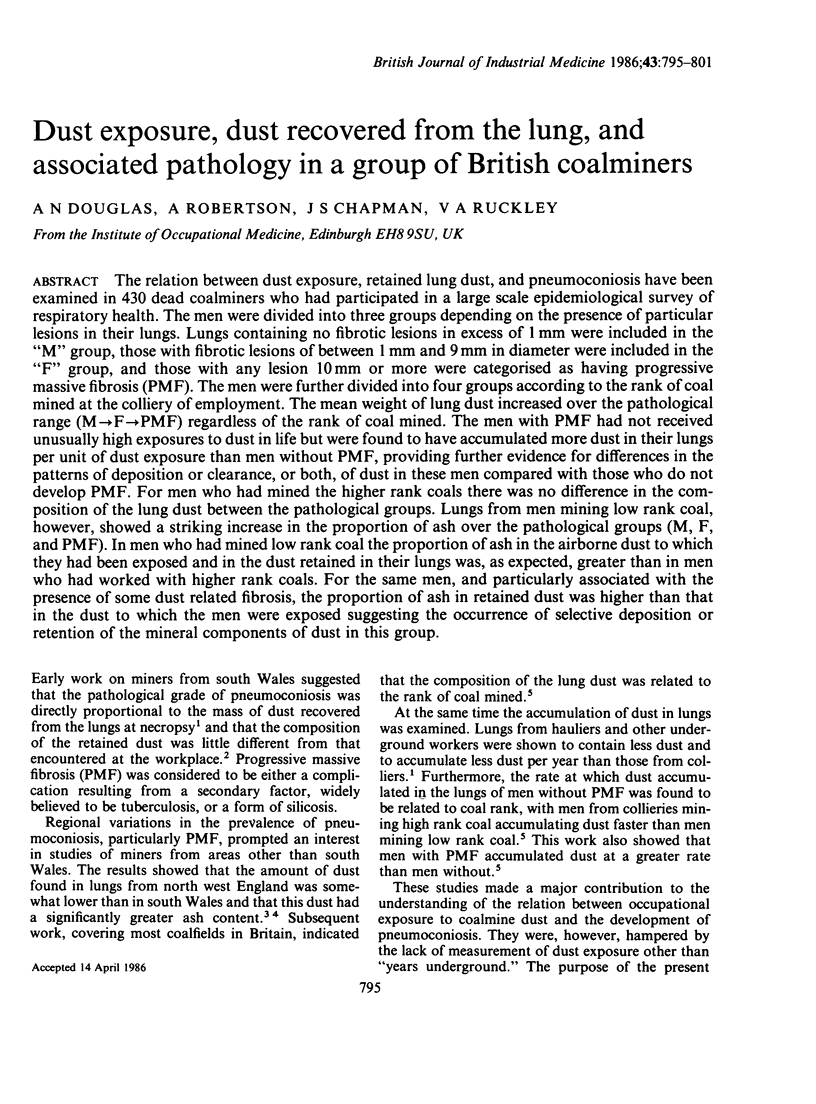
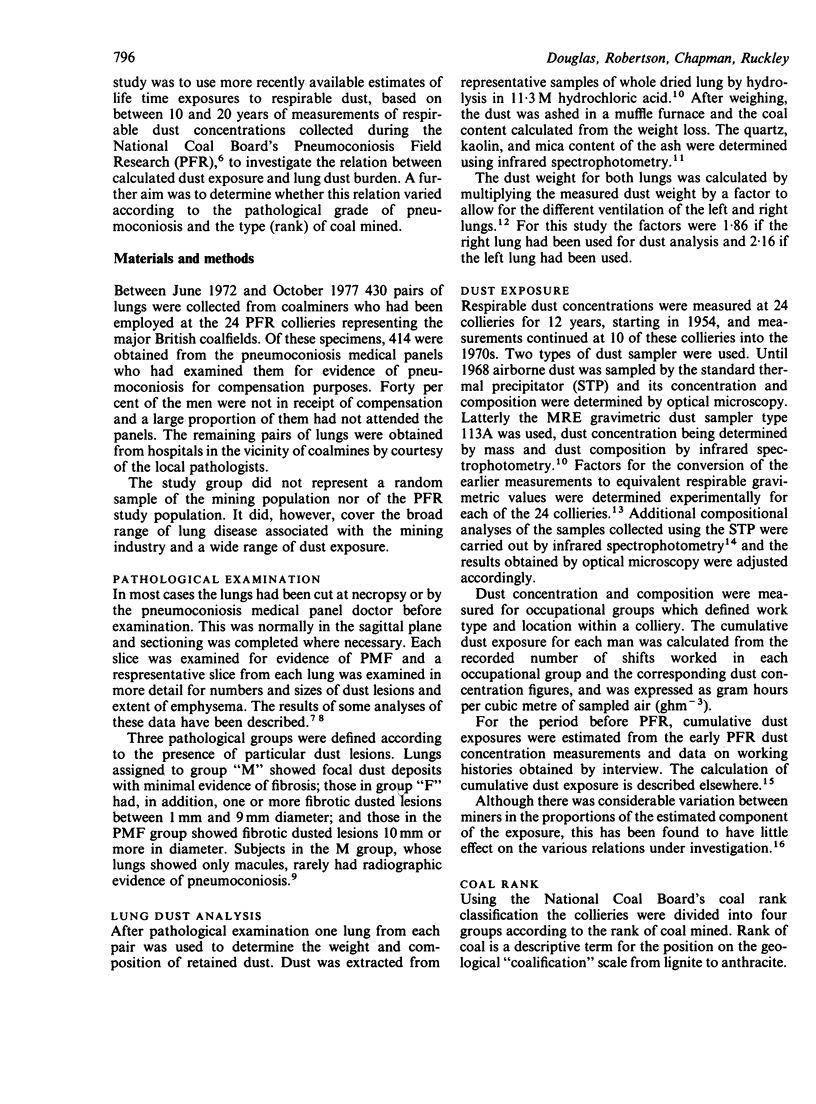
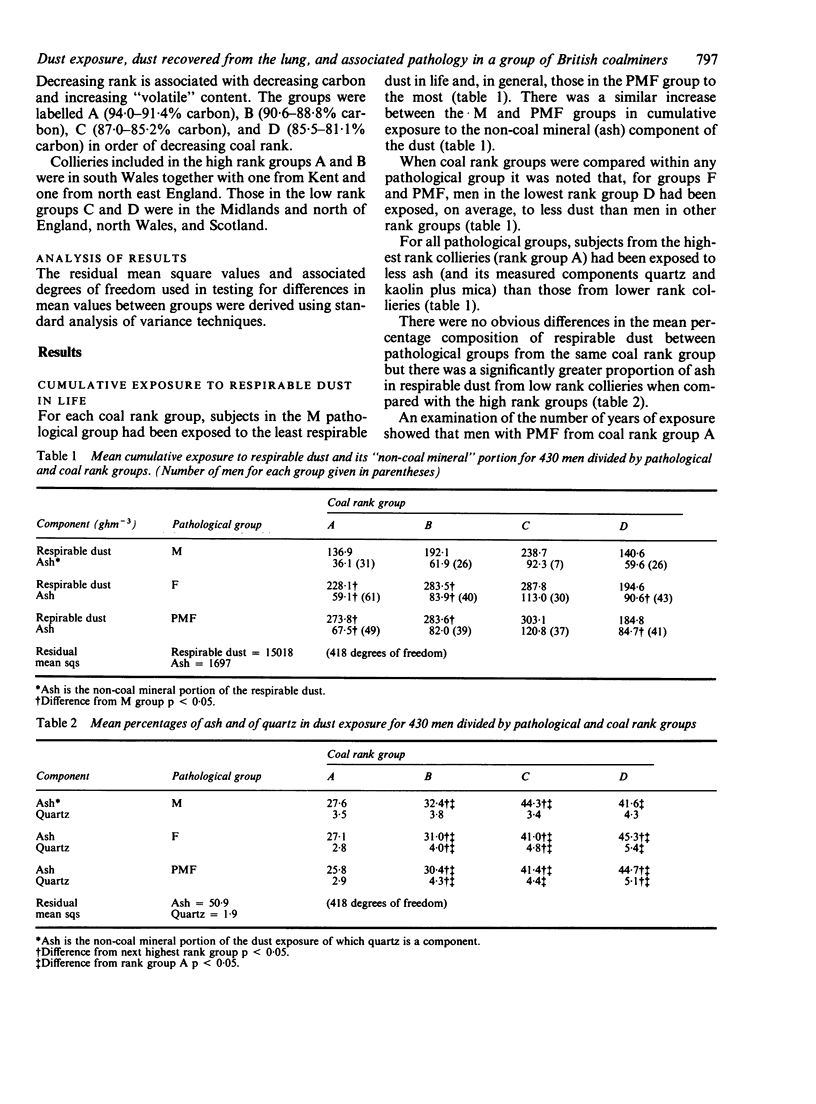
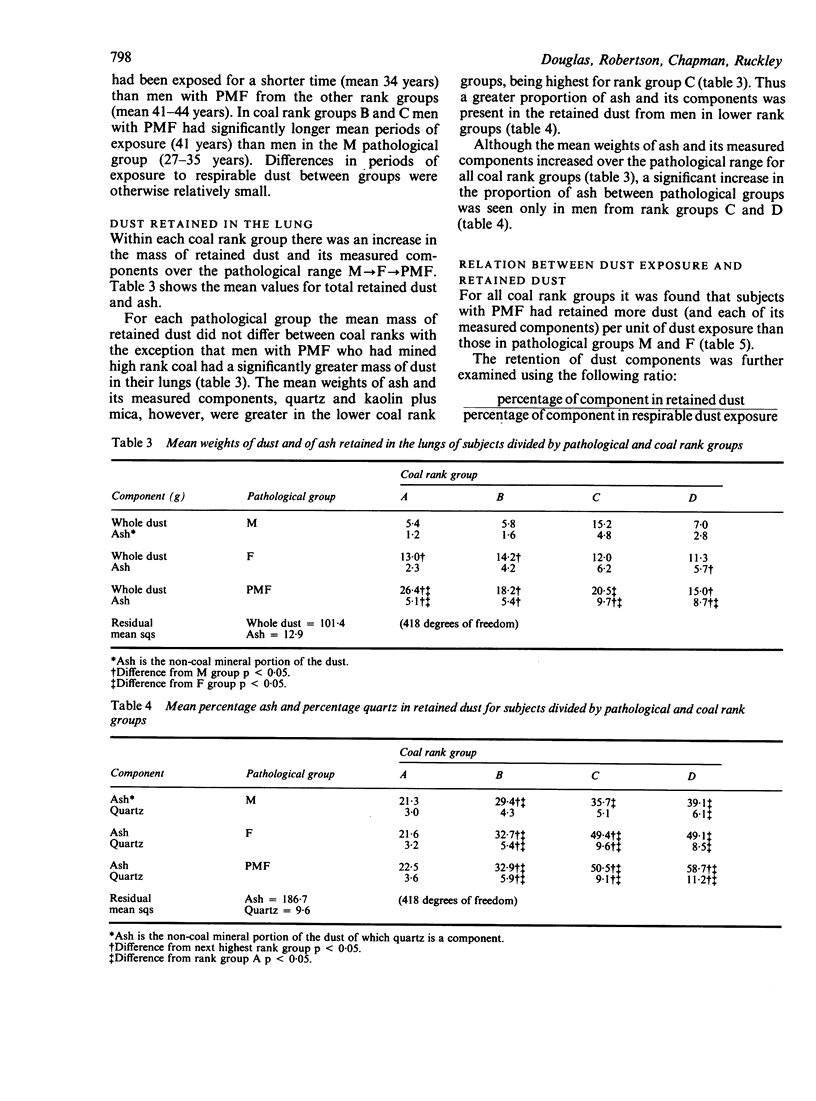
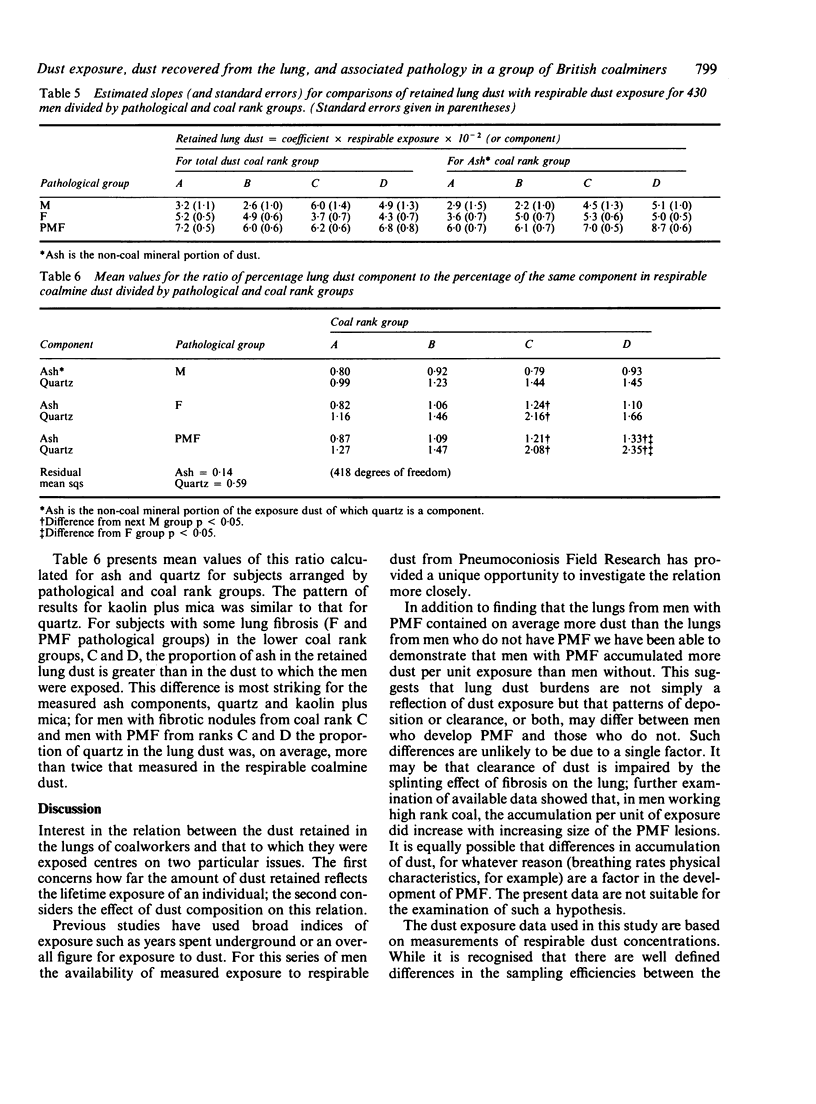
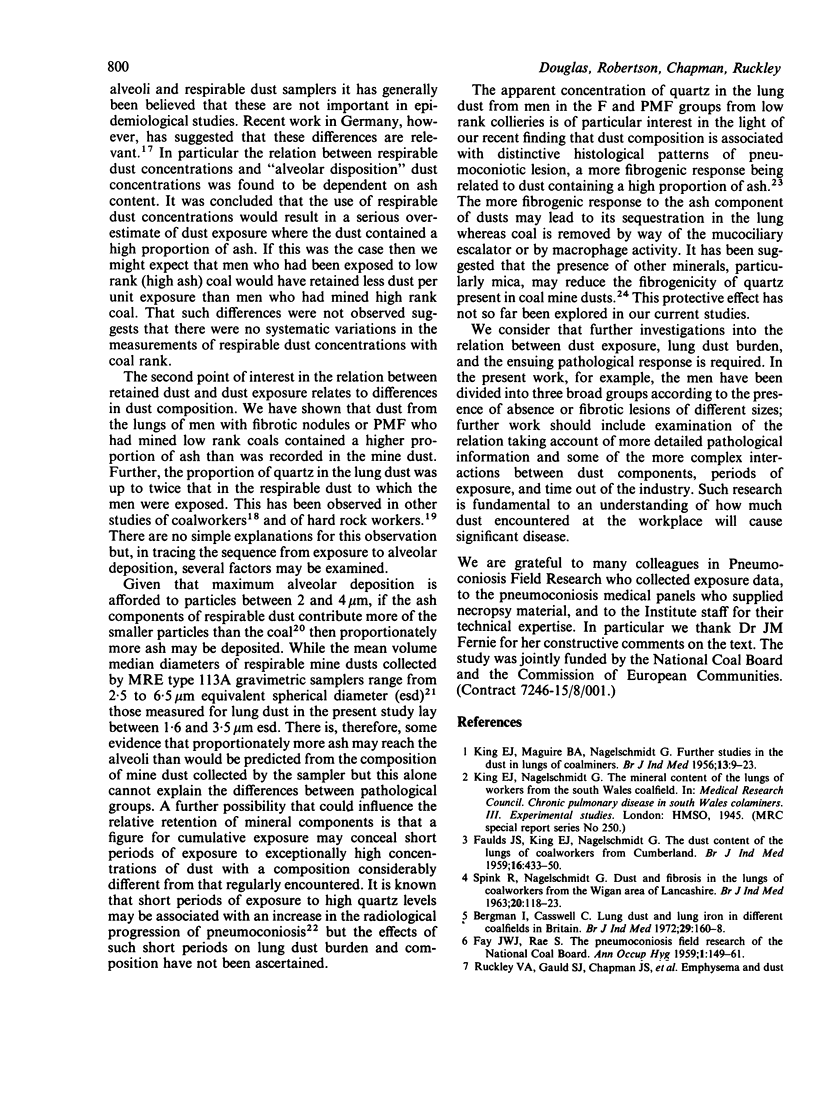
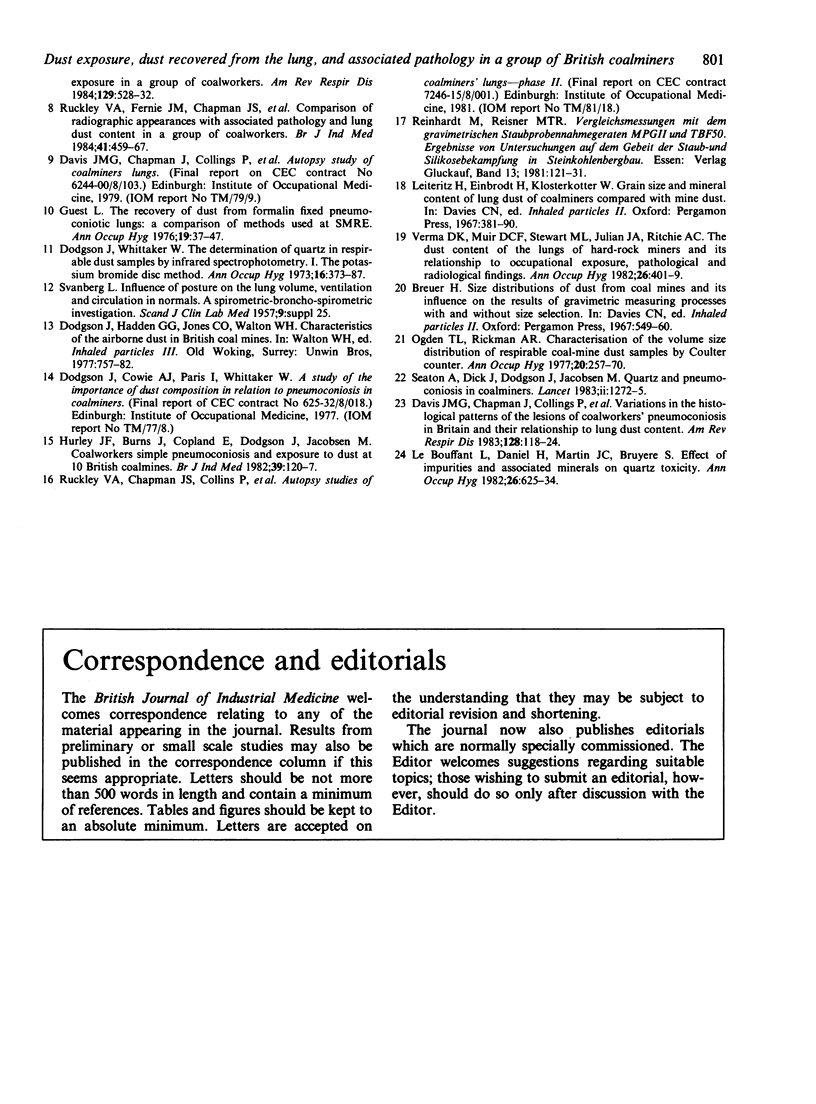
Selected References
These references are in PubMed. This may not be the complete list of references from this article.
- Bergman I., Casswell C. Lung dust and lung iron contents of coal workers in different coalfields in Great Britain. Br J Ind Med. 1972 Apr;29(2):160–168. doi: 10.1136/oem.29.2.160. [DOI] [PMC free article] [PubMed] [Google Scholar]
- Davis J. M., Chapman J., Collings P., Douglas A. N., Fernie J., Lamb D., Ruckley V. A. Variations in the histological patterns of the lesions of coal workers' pneumoconiosis in Britain and their relationship to lung dust content. Am Rev Respir Dis. 1983 Jul;128(1):118–124. doi: 10.1164/arrd.1983.128.1.118. [DOI] [PubMed] [Google Scholar]
- Dodgson J., Whittaker W. The determination of quartz in respirable dust samples by infrared spectrophotometry--I: The potassium bromide disc method. Ann Occup Hyg. 1973 Dec;16(4):373–387. doi: 10.1093/annhyg/16.4.373. [DOI] [PubMed] [Google Scholar]
- FAULDS J. S., KING E. J., NAGELSCHMIDT G. The dust content of the lungs of coal workers from Cumberland. Br J Ind Med. 1959 Jan;16(1):43–50. doi: 10.1136/oem.16.1.43. [DOI] [PMC free article] [PubMed] [Google Scholar]
- Guest L. The recovery of dust from formalin-fixed pneumoconiotic lungs: a comparison of the methods used at SMRE. Ann Occup Hyg. 1976 Jul;19(1):37–47. doi: 10.1093/annhyg/19.1.37. [DOI] [PubMed] [Google Scholar]
- Hurley J. F., Burns J., Copland L., Dodgson J., Jacobsen M. Coalworkers' simple pneumoconiosis and exposure to dust at 10 British coalmines. Br J Ind Med. 1982 May;39(2):120–127. doi: 10.1136/oem.39.2.120. [DOI] [PMC free article] [PubMed] [Google Scholar]
- KING E. J., MAGUIRE B. A., NAGELSCHMIDT G. Further studies of the dust in lungs of coal-miners. Br J Ind Med. 1956 Jan;13(1):9–23. doi: 10.1136/oem.13.1.9. [DOI] [PMC free article] [PubMed] [Google Scholar]
- Le Bouffant L., Daniel H., Martin J. C., Bruyère S. Effect of impurities and associated minerals on quartz toxicity. Ann Occup Hyg. 1982;26(1-4):625–634. [PubMed] [Google Scholar]
- Ogden T. L., Rickmann A. M. Characterization of the volume size distribution of respirable coal-mine dust samples by Coulter counter. Ann Occup Hyg. 1977 Dec;20(3):257–270. doi: 10.1093/annhyg/20.3.257. [DOI] [PubMed] [Google Scholar]
- Ruckley V. A., Fernie J. M., Chapman J. S., Collings P., Davis J. M., Douglas A. N., Lamb D., Seaton A. Comparison of radiographic appearances with associated pathology and lung dust content in a group of coalworkers. Br J Ind Med. 1984 Nov;41(4):459–467. doi: 10.1136/oem.41.4.459. [DOI] [PMC free article] [PubMed] [Google Scholar]
- Ruckley V. A., Gauld S. J., Chapman J. S., Davis J. M., Douglas A. N., Fernie J. M., Jacobsen M., Lamb D. Emphysema and dust exposure in a group of coal workers. Am Rev Respir Dis. 1984 Apr;129(4):528–532. [PubMed] [Google Scholar]
- Seaton A., Dick J. A., Dodgson J., Jacobsen M. Quartz and pneumoconiosis in coalminers. Lancet. 1981 Dec 5;2(8258):1272–1275. doi: 10.1016/s0140-6736(81)91503-8. [DOI] [PubMed] [Google Scholar]
- Verma D. K., Muir D. C., Stewart M. L., Julian J. A., Ritchie A. C. The dust content of the lungs of hard-rock miners and its relationship to occupational exposure, pathological and radiological findings. Ann Occup Hyg. 1982;26(1-4):401–409. [PubMed] [Google Scholar]
- WAGNER J. C. Asbestosis in experimental animals. Br J Ind Med. 1963 Jan;20:1–12. doi: 10.1136/oem.20.1.1. [DOI] [PMC free article] [PubMed] [Google Scholar]


